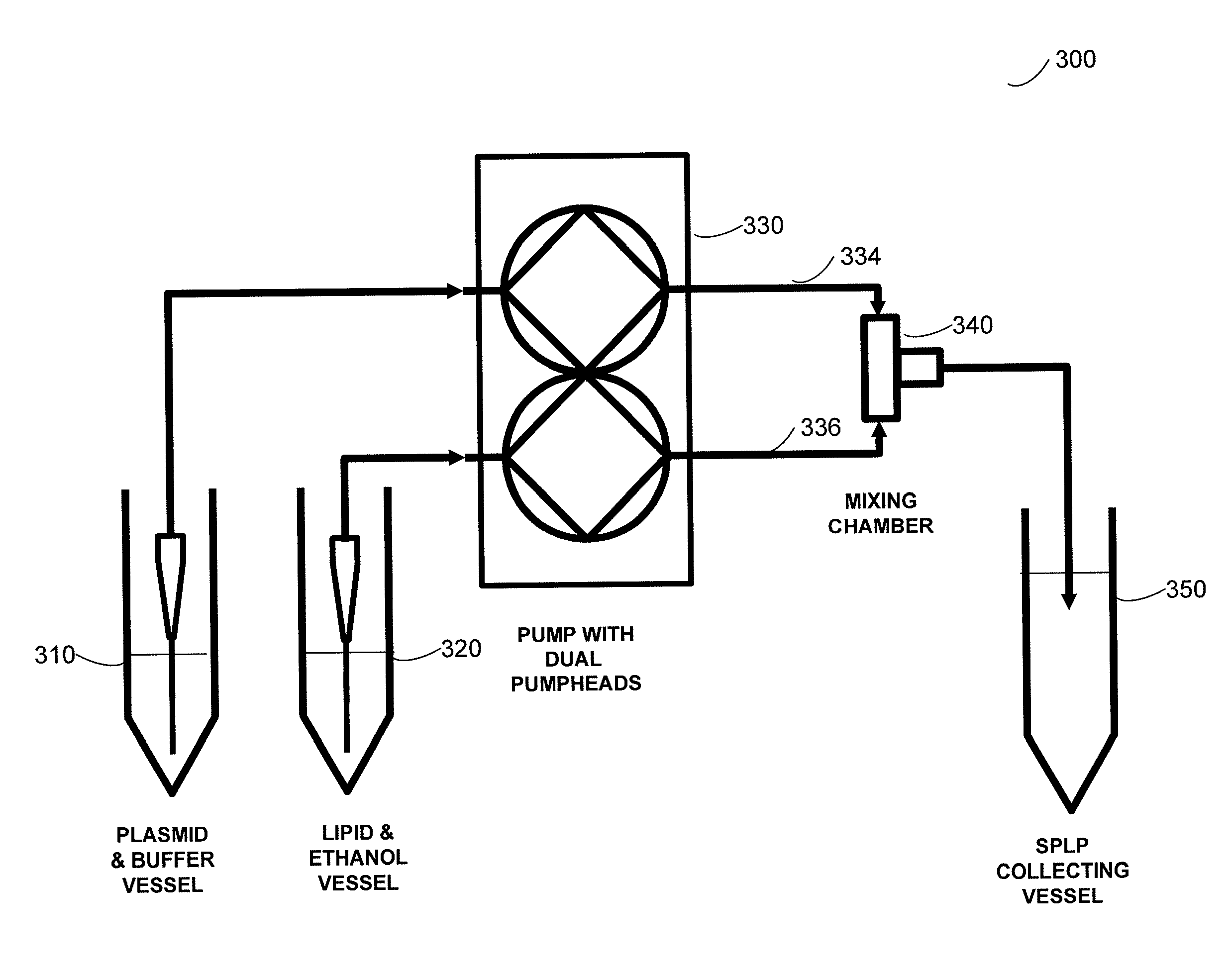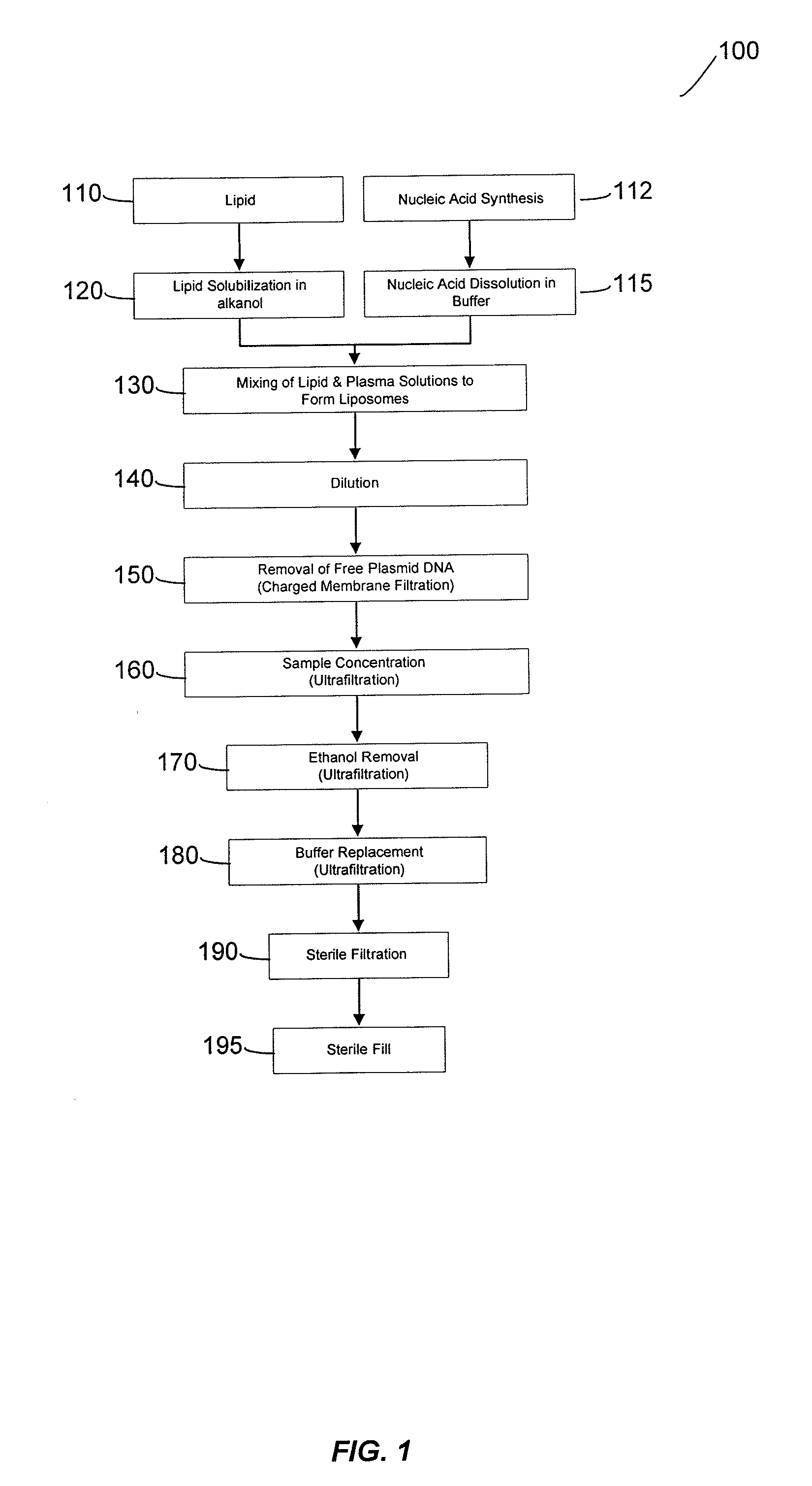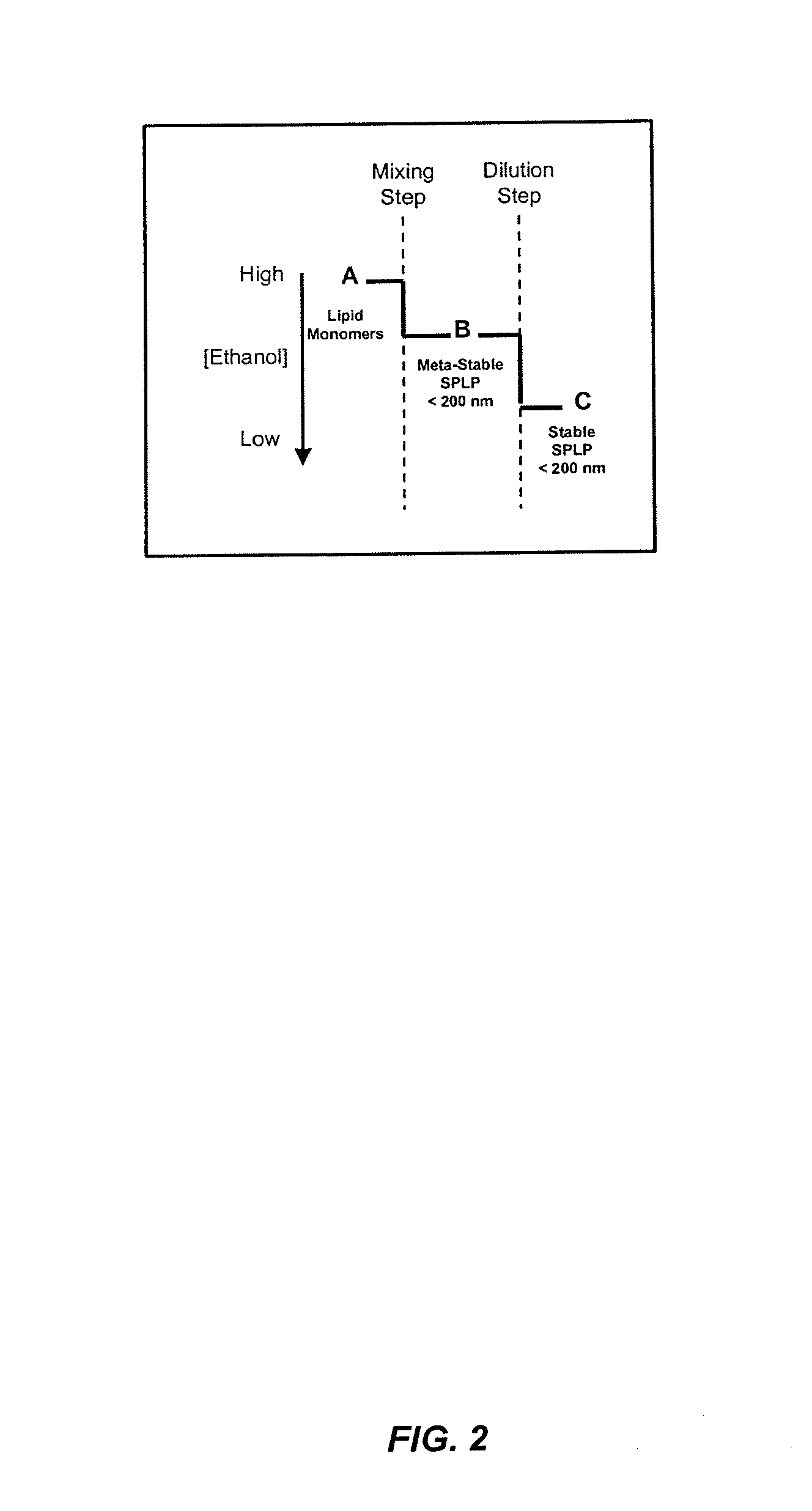Liposomal apparatus and manufacturing method
a technology of liposomes and manufacturing methods, applied in colloidal chemistry, biocide, drug compositions, etc., can solve the problems of short half-life of liposomes in the bloodstream, inability to easily scale up the production of large volumes of liposomes, and dephospholipid raw materials and encapsulated drugs
- Summary
- Abstract
- Description
- Claims
- Application Information
AI Technical Summary
Benefits of technology
Problems solved by technology
Method used
Image
Examples
example 1
[0090]This Example illustrates various physical and chemical properties of SPLPs made in accordance with one embodiment of the present invention.
[0091]Table I the amount of ethanol, pDNA and lipid content in process steps according to the present invention.
[0092]
TABLE I pDNALipid% Initial[Ethanol][pDNA]Recovery[Lipid]RecoverySTEPVolume(%)(mg / ml)(%)(mg / ml)(%)SPLP formation10045 0.4595 7.695Dilution20022.50.2390 3.890Concentration5022.50.909015.190Ethanol removal50 0.909015.190Buffer replacement*450.908115.181Free DNA450.645514.476Removal**(0.55)(12.4)Sterile filtration490.505011.168& Vial fill****Estimate 10% total volume and SPLP loss after buffer replacement step.**Assume that 75% of pDNA is encapsulated and all free DNA is removed. Estimate 5% loss of SPLP on anion exchange cartridge. At this step the sample will be assayed for encapsulated pDNA and adjusted to 0.55 mg / ml to anticipate loss of SPLP during the filtration step (concentrations after adjustment to 0.55 mg / ml pDNA show...
example 2
[0097]This Example illustrates various process parameters in one embodiment of the present invention.
[0098]In one SPLP embodiment, varying the initial ethanol concentration for lipid dissolution had little impact on either vesicle size or DNA encapsulation, providing that the ethanol concentration was high enough to ensure that none of the individual lipid components precipitated (see, FIG. 5). Below 75% ethanol, lipids were not soluble even with heating to 55° C. Lipids dissolved in 75% ethanol at 55° C. formed SPLP with larger mean diameters and lower DNA encapsulation (see, FIG. 5).
[0099]The initial DNA to lipid ratio has been varied from 0.048-0.081 mg DNA: mg lipid formulation and vesicles of similar size with 77-90% DNA encapsulation were formed.
[0100]SPLPs have been prepared at a pH range of about 3.5-6 for the initial mixing step and all formulations possessed mean particle diameters of less than 150 nm and DNA encapsulation efficiencies of greater than 50% (see, FIG. 6). At...
example 3
[0103]This Example illustrates the use of one process of the present invention to make EPC and POPC vesicles.
[0104]POPC vesicles are useful as “sink” vesicles for membrane fusion assays. In particular, they can be used in excess to remove PEG lipids from other liposomes, thus destabilizing the other liposomes and allowing them to fuse with the desired membrane. EPC vesicles are useful for removing cholesterol from arterial plaques.
[0105]The vesicles were prepared at an initial ethanol concentration of 80%, and lipid concentration of 10 mM. After mixing and dilution, the ethanol concentration was 20%, and lipid concentration was 5 mM. The EPC formulation was mixed and diluted with PBS, and the POPC was mixed and diluted with HBS. Both preparations were concentrated and ethanol removed using an ultrafiltration cartridge, i.e., the EPC against PBS, and the POPC against HBS. Both preparations were then sterile filtered using 0.22 um syringe filters.
[0106]
TABLE IVEPC and POPC vesicle dat...
PUM
 Login to View More
Login to View More Abstract
Description
Claims
Application Information
 Login to View More
Login to View More - R&D
- Intellectual Property
- Life Sciences
- Materials
- Tech Scout
- Unparalleled Data Quality
- Higher Quality Content
- 60% Fewer Hallucinations
Browse by: Latest US Patents, China's latest patents, Technical Efficacy Thesaurus, Application Domain, Technology Topic, Popular Technical Reports.
© 2025 PatSnap. All rights reserved.Legal|Privacy policy|Modern Slavery Act Transparency Statement|Sitemap|About US| Contact US: help@patsnap.com



